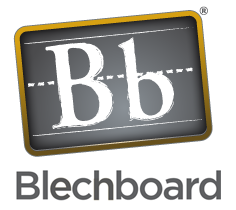If you’ve read anything in this blog, you know that I’m subject to “oh look, shiny!”, constantly distracted and going in one hundred directions. This post will get as close to the way my brain works.
First up, we’re scrapping Blackboard Collaborate as our web conferencing tool and installing WebEx. As a conferencing tool it’s light years ahead in terms of usability and functionality. I’m sure some of our more advanced users will find the quirks, but hopefully we can manage to stay one or two steps ahead of them. We had been Collaborate clients for years, migrating over from a self hosted Elluminate install. Over time, the product, and it’s terrible Java interface, caused our users issues. We did integrate it directly with our D2L installation, which solved a lot of the interface issues, but then we’ve been hit with conversion errors that can’t be fixed by the user but prompt a ticket to Blackboard support. While Blackboard support have been excellent in this particular case, they haven’t been great over the years. Combine that with the fact that Blackboard has been promising a lot, and not producing a whit of evidence that they’ll be able to pull it off. If they weren’t so big, I’d be calling all their promises vaporware, but I fully expect they’ll be able to deliver eventually. It’s the eventually part that’s the problem.
Second, I’m working through how we can roll out blogs effectively to faculty who want their students to blog, but want a campus install to do it from. I know WordPress Multisite is the way to go, but it’s going to be a slow going process as we need to work with other groups on campus to make this one happen. I personally think that having an academic blog is an important piece of the process of going to University and becoming an academic – how else do people disseminate their findings to the public without the filter of a news organization? How else do academics form their own personal learning network? I’m a huge believer in blogging as a form; and I see it as a reflective practice more often than not. It’s also a space that I can use to see how ideas sound, and it helps me articulate ideas better (by slowing my brain down to typing speed, which is much slower than my mouth goes).
Third, is the upgrade to Turnitin, will practically force us to convert our existing connection between D2L and Turnitin to the new LTI connection between the two parties. As always, this is a last minute addition to our semester startup, so it’s an added complexity that we didn’t really want to think about but will have to consider over the next few days. While Turnitin is forcing everyone to upgrade, there is an opt-out process, but from what I know (and I’ll know more later this week when we chat with our academic integrity office) we don’t know what that really means? How does opting-out effect us? Can we revert if everything craps out and nothing works post-upgrade?
Fourth, I’ve been asked to sit on a portfolio advocacy committee, that will push portfolio use to “the next level” campus wide. I have a few ideas, but I’ve never been fond of sitting on committees, more fond of the work that needs to get done out of the committees. I guess it’s progress when you have someone who knows what it takes and whether it can be done currently, rather than facing down the fact you can’t do what you had proposed due to technical feasibility. My boss is sneaky good at eliminating my ability to point the finger at other people’s decisions, so I guess this one will partially be on me.
